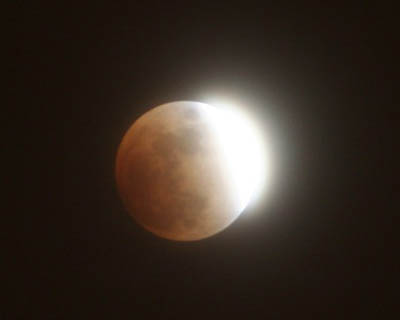Total lunar eclipse on Wednesday
June 14, 2011 11:45 pm
A total lunar eclipse will be visible in areas such as the Africa, southern Asia and Australia on June 15, 2011 (Wednesday). This will be the first of two lunar eclipses in 2011 and the third of all eclipses that occur throughout the year.
The June 15 total lunar eclipse will be visible to observers in Africa, southern Asia, and Australia. It is said that this eclipse will be one of the darkest eclipses ever. It will be second only to the July 16, 2000 total lunar eclipse. During the totality of the eclipse, the moon will pass in front of the center of the earth’s shadow. The best location to view the eclipse will be in the northernmost region of the “entire-eclipse zone” in central Asia, as well as Eastern Europe and northeastern Africa.
Many people in South America, Western Africa and Europe will view the eclipse at moon rise, while Eastern Asia and Australia will view the eclipse at moonset. Western Europe will see the moon rise already totally eclipsed and covering a portion of the ninth-magnitude global cluster NGC 6401, while those in southern Africa and Australia will see the moon slip past the cluster untouched. It is important to note that in order to see the cluster, you will need at least a 100-mm telescope.
The eclipse’s total phase lasts for 100 minutes. The penumbral eclipse begins at 17:24:37 Universal Time (UT) and the partial eclipse begins at 18:22:57 UT. The total eclipse begins at 19:22:29 UT and the point of the greatest eclipse occurs at 20:12:36 UT. The umbral eclipse magnitude will reach 1.71 at the instant of greatest eclipse, making it one of the darkest eclipses in history. The total eclipse ends at 21:02:42, followed by the end of the partial eclipse at 22:02:14 UT. The penumbral eclipse ends at 23:00:41 UT. - (Courtesy: timeanddate.com)














